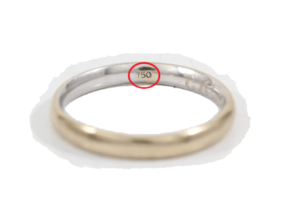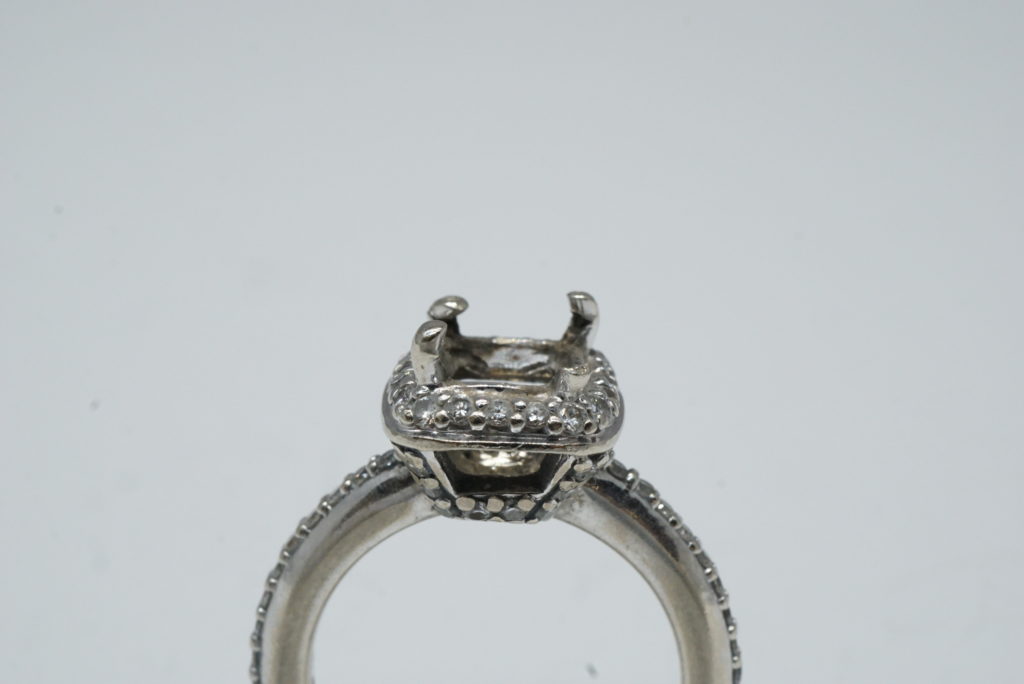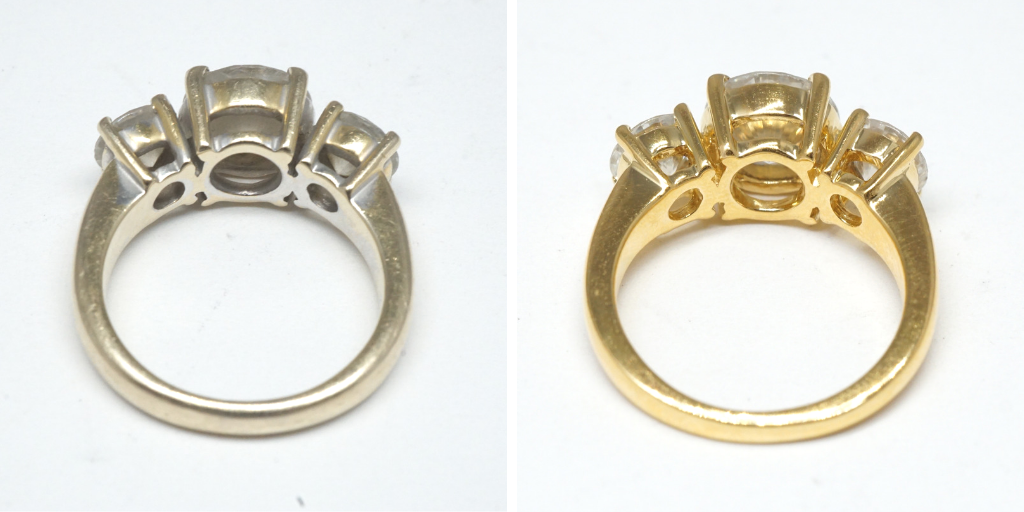Can You Spot A Fake? Your Complete Guide to Jewelry Authentication
Written by Anna Currell
September 6, 2022

Do you know how to tell if your jewelry is real? There are all kinds of fakes and duplicates on the market, and it can be difficult to know the difference when you’re making a purchase. Luckily, there are certain details you can pay attention to when you’re out shopping or when you’re looking for more information about the jewelry you already own. Here’s our guide to authenticating jewelry by yourself, before you call in the professionals.
Jewelry Authentication vs. Jewelry Appraisal: What’s the Difference?
Jewelry authentication is the process of determining whether or not an item is real. Authentication can establish whether a piece is made of the metals you think it is, or whether it was really created by a designer label or brand. Jewelry appraisals, on the other hand, will tell you how much your jewelry is worth. Licensed jewelers consider a number of factors during appraisals: materials used, the piece’s age and condition, and any authentication documents that are available. That’s why authentication and appraisal go hand in hand; authentication informs the appraisal process so that jewelers and insurers can make accurate assessments about the piece’s value. Both are good ways to learn more about your jewelry!
DIY Jewelry Authentication
There are a few clues you can look for to do your own jewelry authentication without any professional training. Whether you’re purchasing jewelry or have jewelry that you’re curious about, give these steps a try:
Check for Stamps
If your jewelry has a stamp, that’s good news! Stamps can provide a lot of information about the metals in your jewelry.
Gold: Authentic gold will normally be marked with the karat amount. Karats represent the percentage of gold that is present in a piece of metal. The scale goes up to 24, so 1 karat means 1/24th of the metal is pure gold, whereas 24K indicates pure gold. An alternative to the karat system is the gold purity decimal; for example, a .780 stamp means the piece is 78% pure gold, or 18K gold. Costume jewelry might be stamped with letters like GP (gold plated) or GF (gold filled) to indicate that there is gold present even though the piece isn’t solid gold.

Silver: Authentic silver will normally be stamped with the word “Sterling” or “Fine Sterling;” sterling silver is an alloyed metal that is popular in jewelry. You might also see “Silver Plated” on some jewelry, which indicates that while the metal underneath could be anything, the piece has been coated with a layer of silver. Silver plating simply means that the silver could wear off more easily; a piece of jewelry made entirely from silver will be more durable.
Inspect the Condition of the Metal
If your jewelry isn’t stamped, that doesn’t necessarily mean it’s fake. A quick inspection can help you determine whether the metal is solid or plated; is the metal showing signs of wear or discoloration? If so, that could mean the metal is plated or the piece is costume jewelry. Metal replacements designed to look like silver or gold will often turn green or brown over time (and depending on the quality, can transfer those rusted colors to your skin). Judging the authenticity of gemstones is much harder and often can’t be done with an untrained eye, so it’s a good idea to focus on your jewelry’s metals during your home authentication.
How the Pros Authenticate Jewelry
To get the most out of your jewelry authentication, you should consult a trained expert. Even if you’ve turned authentication into a side hobby on your local garage sale circuit, only professional jewelers and gemologists can provide reliable feedback and deep expertise.
Quality of Material and Craftsmanship
Authentic jewelry will be made with only the best materials, which professionals can detect using dedicated tools and solutions. They’ll also be able to identify every single element that makes up the piece to give you a sense of its overall quality. Material grade and craftsmanship are usually dead giveaways when it comes to separating authentic jewelry from knock-offs; only the real thing will demonstrate outstanding quality.
Signature Marks
World-renowned designers and brands often add a signature to their pieces in the form of embellishments, charms, and stamps. Some fraudulent jewelry will try to mimic these signature marks; a trained professional jeweler can distinguish the authentic marks from the fakes because they know what to look for.

This ring is made from 9k gold (37.5%) and has a clear Birmingham anchor stamp.
When your jewelry is authenticated by a professional, you will receive a Letter of Authentication (also known as an LOA) that will serve as your proof of authenticity. Once you have your jewelry authenticated with proper documentation, you’ll have all you need to get the piece appraised and insured.
Work With an Expert for an Appraisal
If you have enough information, you might be able to conduct an at-home appraisal. But if you’re not sure of the details (such as the jewelry’s age, brand, or metal composition), you can take your jewelry to a licensed jeweler to determine its value. An appraiser can determine your jewelry’s shape and cut, measurements, weight, clarity, color, polish, and more. Professionals should be able to identify the origin of the gemstones in your piece and establish whether or not they’ve been treated. An appraisal can also offer an estimated retail value, which is helpful information if you’d like to get your jewelry insured or sell it second-hand.
Once you’ve finished your at-home authentication, the licensed professional appraisers at Quick Jewelry Repairs can help you learn more about your jewelry. Contact us today to start your jewelry appraisal!


